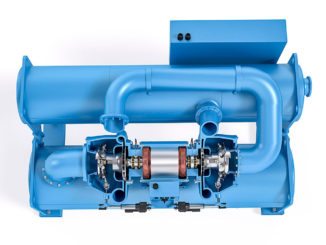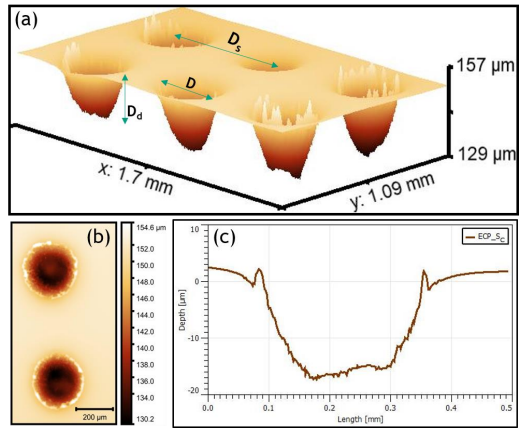I am a postgraduate researcher at the University of Leeds. I have completed my master's degree in the Erasmus Tribos program at the University of Leeds, University of Ljubljana, and University of Coimbra and my bachelor's degree in Mechanical Engineering from VTU in NMIT, India. I am an editor and social networking manager at TriboNet. I have a YouTube channel called Tribo Geek where I upload videos on travel, research life, and topics for master's and PhD students.
Tribology of Plant-Based Natural Fiber Reinforced Polymer Matrix Composites
Table of Contents
Introduction
Many natural fiber polymer composites offer properties comparable to those of synthetic fiber-reinforced composites and are utilized in various engineering systems. However, natural fibers have certain drawbacks, such as high moisture absorption due to their hydrophilic nature, lower strength compared to synthetic fibers, and variability in properties based on the harvesting location, time, and season. These factors negatively impact the tribo-mechanical behavior of natural fiber polymer composite materials. Surface treatment of fibers or the addition of fillers during composite material manufacturing can reduce their hydrophilic nature. Tribo tests on natural fiber-reinforced composites are essential for enhancing the performance of tribological systems. Initially, Tribo testing is conducted at the laboratory level, involving the selection of appropriate geometry, contact surface, load, sliding speed, and contact pressure, along with wear and friction analysis. Common contact configurations include pin on flat, flat on flat, rotating pin on disc, pin on rotating disc, cylinder on cylinder, pin on rotating cylinder, among others.

Figure-1 Natural fiber composites (NFC); hybrid composites; mechanical properties; thermal properties; water absorption [2]
Jute Fibre
Jute fiber, derived from the bast of Corchorus capsularis and Corchorus olitorius plants, is utilized in creating jute-polymer composites such as jute/epoxy, jute/polyester, and jute/polypropylene for applications like low-cost housing and small fishing boats. Surface treatment of jute fibers plays a crucial role in enhancing the performance of composite materials. Coupling agents, in particular, have been shown to improve the abrasive wear resistance of jute fiber-reinforced polyester composites. The tribological behavior of jute fiber-reinforced composites is influenced by fiber volume fraction and fiber orientation. A 33% fiber volume fraction, for instance, increases the friction coefficient by 14% and reduces the wear rate by 95% in normal fiber orientation.
Coir Fibre
Coir fiber, extracted from the husk of coconut trees widely grown in India, Sri Lanka, Malaysia, the Philippines, and Indonesia, serves as a versatile material for manufacturing ropes, yarns, mats, and rugs. Despite its extensive use, a substantial amount of coconut husk remains underutilized. Researchers are actively studying the tribological and mechanical properties of coir fibers to develop valuable industrial applications. For instance, investigations into coir-filled epoxy matrix composites have explored improvements in wear resistance with varying fiber concentrations. Studies on fiber treatment and adjustments in fiber weight fractions within epoxy composites consistently demonstrate significant impacts on wear behavior. This research underscores the critical role of fiber preparation in enhancing material durability for various applications, including those evaluated in friction and wear studies.
Sisal Fibre
Sisal fiber, obtained from the leaves of sisal plants commonly found in Brazil and parts of North America like the West Indies, is valued for its strength, elasticity, and resistance to corrosion. However, its hydrophilic nature makes it prone to rapid degradation when exposed to environmental conditions, which limits its longevity. Researchers are actively exploring treatments to reduce sisal’s hydrophilic properties and enhance its performance in composite materials. Studies have shown that treatments like alkaline treatments can improve the moisture absorption behavior and mechanical strength of sisal-reinforced composites. Investigations into short sisal fiber-reinforced epoxy composites have revealed that factors such as load, sliding distance, and sliding speed significantly affect the wear characteristics of the material. These findings underscore the importance of understanding how operational conditions influence the durability of sisal-based composites. Studies involving sisal and glass hybrid composites have suggested that sisal fibers could potentially replace synthetic fibers in tribological applications. This research highlights sisal’s versatility and its potential to contribute to sustainable composite materials without compromising performance. Research on different shapes of sisal fibers—undulated, spiral, and straight—combined with resin has demonstrated varying effects on the tribological, morphological, and mechanical properties of composites. For instance, helical-shaped sisal fibers have shown promising tribological performance in friction composite applications compared to other fiber shapes, showcasing their potential for specialized applications in diverse industries.
Cotton Fibre
Cotton, a vital crop in the Malvaceae family, is extensively used in clothing due to its global demand and ability to blend easily with other fibers, making it favorable for composite materials. Research on cotton fiber reinforced polyester composites shows that varying the weight fractions of graphite, fly ash, and SiC fillers significantly affects the friction properties of the materials. Increased filler content generally improves adhesion and distribution, leading to varying effects on the coefficient of friction. Studies on glass and sugarcane fiber composites have explored how fiber orientation influences wear behavior, emphasizing the importance of understanding filler distribution and its impact on composite performance.
Reference




























